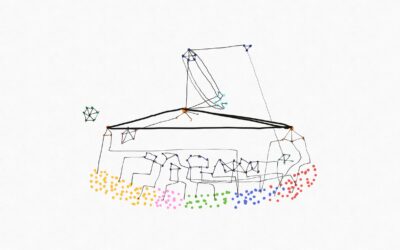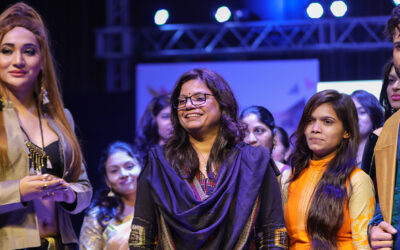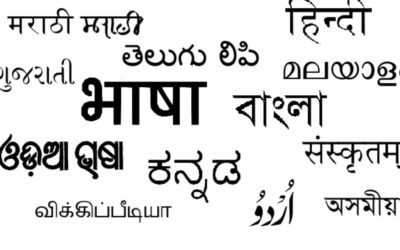In the months of April and May 2020, when there was a nationwide lockdown, AMRIT clinics (run by Basic Healthcare Services), supported by Aajeevika Bureau were busy distributing food packets and ration in remote villages of Southern Rajasthan. Many families in this region had migrant workers who had walked for days together and made it back to their homes. Grocery stores near them were either out of stock or shut, and it was almost impossible for them to reach the bigger towns. During such difficult times, some families even said ‘no’ to the food packets being distributed by our organisations. They feared that these packets had the virus and they would die on consuming it.
When I joined Basic Healthcare Services (BHS) a few months after this and got to hear this story, I found it extremely difficult to believe. However, within no time, I met people who refused to go to a hospital even during emergencies because they were scared of getting infected with Covid-19, or of being trapped in the hospital for a long time. I was now convinced that the story about refusing food packets could be real.
The resistance towards going to bigger hospitals in Udaipur has been a challenge at AMRIT clinics since long before the pandemic. Our health workers and team members often fail at convincing a family to go for referral.
Recently, I got a chance to spend a lot of time talking to a family trying to convince them to take their pregnant daughter-in-law to a hospital. She had 3 gm Haemoglobin and needed immediate care. They gave many reasons and as I kept countering each one of them, I was finally told by the patient herself, “I will die here if that is meant to happen, but I will not go to Udaipur.” It was clear that they had some strong beliefs and/or superstitions preventing them from going to a hospital. It could also be rooted in the past bad experiences of someone in their village or family or it could be something else. At this point, one needs to remember the stark cultural differences between the tribal community and an urban hospital setting, including the language being spoken in these two spaces.
I have faced many such instances where convincing someone to take a healthcare decision, based on our knowledge of what we think is best for them, has been particularly hard. This is closely linked to their beliefs and practices. Pregnant women cannot consume ghee or oil during pregnancy because it affects the well-being of the baby. A tuberculosis patient cannot drink sour buttermilk, the only easily available dairy product for many families in the region. Women should not eat eggs because it affects their reproductive ability.
There are also several myths around post-natal care, for example, that the umbilical cord care means applying cow dung or ghee on it, that the first milk from the mother needs to be removed, that the baby must be fed goat milk.
Many people we work with, fear immunization. They are scared that the children will fall ill, or that it will affect fertility among women. There are numerous stories of how children run away as they see an Aanganwadi worker or ASHA coming towards their village. On the other hand, their attitude towards injections differs in the case of curative care. They believe that the injections or bottles (intravenous fluids) are more powerful in curing a disease than other forms of medication like tablets.
People often choose to see Bangali doctors (quacks) who give steroids in the form of injections over going to hospitals where a patient is thoroughly diagnosed and tested before treatment. The misconception about the injection given by the Bangali being more effective than the tablets is prevalent even today.
Health seeking behaviour and well-being practices of tribal communities across the country and maybe across the world are heavily determined by their socio-cultural beliefs. These beliefs and practices have many interesting and positive elements, some of them also have negative impact on one’s health. Not being allowed to eat nutritious food items, or going to a quack are a couple of examples.
Many of these misconceptions are rooted in their vulnerabilities, fears or structural exploitation carried on since several generations. A lot of these are deeply ingrained and cannot be questioned or changed easily.
In the last few months of working on health education and behaviour change among tribal communities in Gogunda block of Udaipur district, here are some of the insights on how one can change perceptions among people, if needed:
- Using science – In our AMRIT clinics, during one on one counselling, training sessions and on-field meetings, we use diagrams to explain scientific concept to break myths. It has proved to be useful so far. For example, when we find out that a TB patient is avoiding a lot of food items because they fear that their condition will worsen, we explain to them using images of respiratory and digestive systems, to show the interconnections or lack of it.

- Right contact points – Reaching out to the village elders who are revered among the community always helps. If they are convinced, they will take it forward. It is also less problematic for someone within the community to question a belief strongly held for years. Our community health volunteers, Swasthya Kirans (SKs) who are also our strongest link between the clinic and the community are extremely helpful in this context as well. In every training session with them, we make sure to talk about the common myths in the region affecting food habits of TB patients and pregnant women, post-natal care, notions of injection being better than the tablets, prevention from using contraception and more. The SKs then lead these conversations in households and hamlets.
- Success stories – The most impact is created when people see someone going beyond a misconception or belief they held and derive benefit from doing so. A undernourished, weak, female TB patient who is not allowed to consume eggs because she is a woman gained almost ten kilos when she decided to go against this belief. Her story is of great value for other TB patients and women who need nourishment. Similarly, when a local woman starts breastfeeding immediately after child birth, when a family advocates for immunization and when someone chooses to get tested and take medicines instead of going for a quick injection, their neighbours, families and friends start to think in a different direction.

- Change is slow and trust is the key – AMRIT clinics function in areas that had not seen formal medical care earlier. Poor and often exploitative care through quacks or faith healers were the only options. It takes a lot of effort to convey to the community, the benefits of going to any hospital, not just our clinics. However, with years of close communication, regular contact, multiple conversations, visits and follow-ups, we now see an annual footfall of almost 50,000 patients across clinics.
The organisation is built on the principles of working with and for the community, on the basis of mutual trust and building relationships. Gaining a holistic understanding of the challenges, communicating towards an attitude change, reinforcing and monitoring while being respectful are all important aspects in an attempt to bring about a change in behaviour and perceptions. Each one of us at AMRIT clinics spends time to understand someone by talking to them in detail.
Reference:
Jacob Islary, Health and Health Seeking Behaviour among Tribal Communities in India: A Socio-Cultural Perspective, Journal of Tribal Intellectual Collective India (ISSN 2321 5437), Vol.2 Issue 1, No. 1, pp. 1 to 16, June 2014




0 Comments